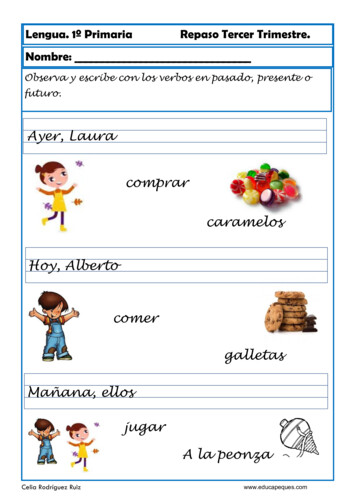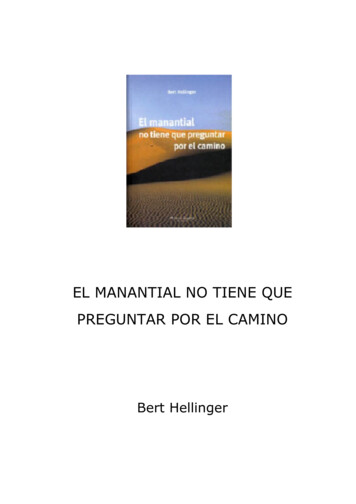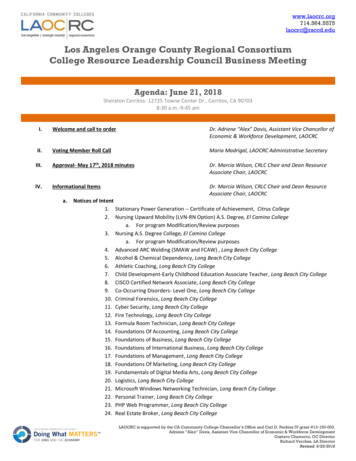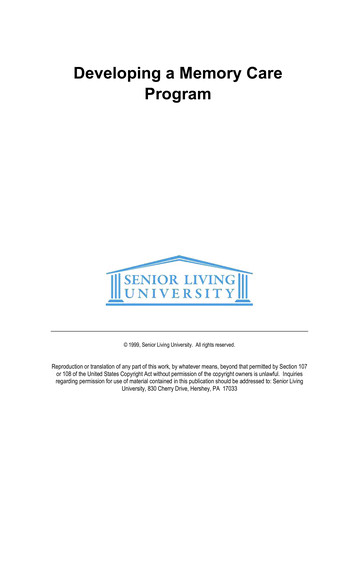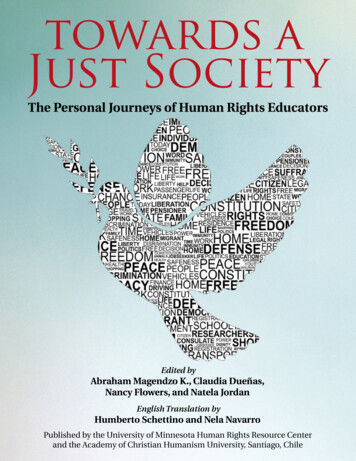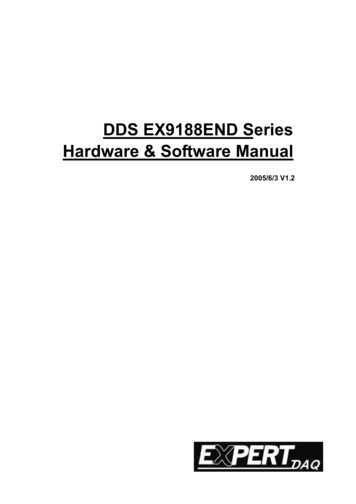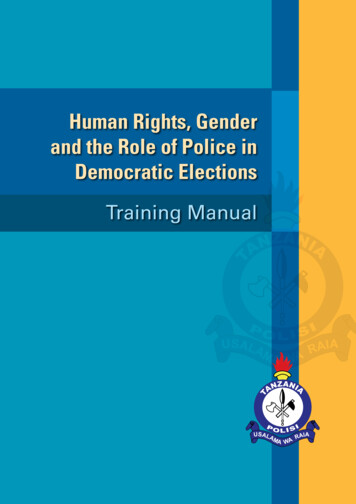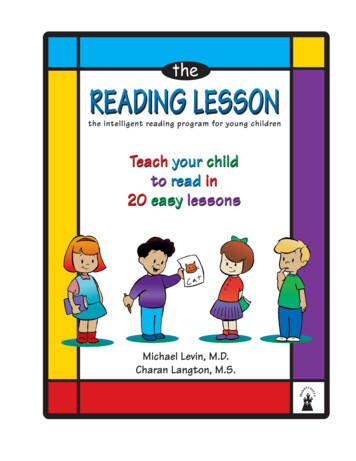
Transcription
the
Copyright 2000, 2004, 2012 Mountcastle CompanyAll Rights ReservedMichael Levin and Charan LangtonNo part of this books and its electronic versions (ebook, pdf files, pictures) maybereproduced, transmitted in any form or by means of electronic or mechanical, includingphotocopying, recording, posting on internet or a network, or any other informationstorage method without the written permission of the publisher.For home use only.Mountcastle Company2305 Camino Ramon, Ste 217San Ramon CA SBN 0-913063-02-9Library of Congress Catalog Card Number 99-64110Art work byBarabara ZeiringEdited byDana Stevens, Irene ElmerAlso trywww.mathlesson.com
WelcometotheReadingLessonWe all want our children to read. With great pride we watch our children learn the alphabet and singthe ABC song. We buy picture books and read to them every night. When she can recognize aparticular word or he can write his name, we are thrilled. But this is still far from reading the way weunderstand it. We try to teach reading, but often do not know where to start. So easy for us, readingseems so difficult and confusing to teach.We found ourselves in this situation when our daughter was four years old. She learned the alphabet,and we were waiting for her to start reading some simple words. We bought software programs forlearning to read but found them shallow and often haphazard. Disappointed, we began to make ourown simple exercises and stories for her to read. We read books on reading instruction for children,researched academic material, talked to parents and teachers, and began to develop a simple dailyreading program. Michael’s understanding of child psychology and development, and my desire for asimple, easy-to-follow method, led to the program you hold in your hands.We have created The Reading Lesson for parents who want to teach their children to read and forinstructors teaching basic reading skills to children. The program is suitable for both homeschoolingand classroom use. It is structured, clear and simple but it does require direct involvement of theparent or a teacher, which we believe is a key element in learning to read.tmThe Reading Lesson is designed for any child who shows interest in books and reading. Someunique features of this course also make it useful for older children with reading difficulties. TheReading Lesson was first published as a software package and tested with over 200 families andschoolrooms. The excellent results and the enthusiastic feedback we received encouraged us topublish this book.The right way to teach reading to childrenLearning to read is the most important task facing the young child and to fail at it is a serious matter.Although most children learn to read during the first two years of elementary school, they do notnecessarily go on to read fluently or with pleasure.Currently, there are two popular ways of teaching reading – the Phonic method and the WholeLanguage method. For some years now, there has been an ongoing controversy regarding thesetechniques, and each has its strong supporters.The Phonic method, the basis of this book and considered superior by many, focuses on teachingthe child to read small sound units first, and then to combine them into larger units – words. Theawareness that combinations of letters represent unique sounds is the key essence of the Phonicmethod.
The Whole Language method, also known as Look-and-Say, does not break the word into soundunits. Instead, it teaches the child to recognize the word by memorizing it as you would a picture.The theory is that the brain can translate directly from the written unit (the word) to the meaning.By knowing the context, the reader anticipates what is coming, and can often speed up therecognition process by guessing.Research tells us that a fluent reader employs word-recognition while reading, but reverts to aprocess of breaking down the unfamiliar word into recognizable sound units. The fluency comesafter years of decoding new and unfamiliar words using phonics and then incorporating them intomemory. The key factor in fluency is developing this ability to effortlessly recognize letter units andwords. Without this essential skill, we would be limited in vocabulary and reading comprehension.At first glance, Phonics and Whole Language methods sound contradictory, but in fact, theycomplement one another in building reading fluency. Phonics if used alone is not enough. Althoughmost English words can be read using simple phonic rules, there are many that defy these rules.English is a hodgepodge of words from many cultures and countries. For the young reader, itappears confusing and inconsistent. The vocabulary is vast, the pronunciation is often irregular, andthe exceptions are as numerous as the rules.The majority of children – nearly 80 percent – can learn to read regardless of the teaching methodused. But for the other 20 percent – particularly those with reading difficulties – the combination ofPhonics and the Whole Language is the best way to teach reading.
What makes this program special the Reading Lesson offers an easy-to-follow recipe for teaching children to read. It takes a childwith no reading skills to about the second grade level in reading. Never-too-hard and never-too-easy,step-by-step the lessons teach phonics and build the sight vocabulary. We begin the lessons with three to four sounds and introduce sight words as we go along.Wordrecognition skills develop through the use of key words. Once these key words are learned usingPhonics, we encourage the child to read them as sight words to gain fluency. Certain words such asyou and do are difficult to explain using the phonic principles. These and other non-phonic key wordsare presented as sight words. the Reading Lesson uses a controlled vocabulary of developmentally appropriate words. Thevocabulary of the program closely corresponds to the 500 most commonly used words in English.We use many of these words as key words. the Reading Lesson does not follow the alphabet. Instead, we begin by teaching the mostcommon letters in the English language. That way, the child can begin reading words and simplestories from the very first lesson. There are no boring drills. All reading is context oriented. You willhear your child say, “Look, I can read!” after the very first lesson. Happiness is knowing that you aremaking it possible. the Reading Lesson uses only lower-case letters in the first ten lessons of the course. Oftenyoung children do not know the lower-case letters well. Realizing that ninety-five percent of allletters in print are lower-case letters, this is where we start. Upper-case letters are introduced later inthe program. For children who know the capital letters of the alphabet, the transition from thelower-case to the upper-case letters is easy. the Reading Lesson uses special typography. The letters are large in the early lessons and getsmaller as we progress. The words are spaced far apart, and page clutter is kept to a minimum. Weuse special symbols to help the child learn the complex and irregular rules of English pronunciation.Children often confuse certain letters, such as b and d. There are special marks to help the childdistinguish these two letters. the Reading Lesson is designed for children ages 4 to 8. Since most children in this age groupcannot follow if-then rules, or rules such as i before e except after c, we have kept all rules to a bareminimum. Your child will learn these rules in due course as part of the school curriculum. We donot even teach the difference between vowels and consonants. As you will see, your child can learnto read just as well without knowing any of these rules.
the Reading Lesson concentrates primarily on teaching the child to decode, that is, to read.Decoding should not be confused with reading comprehension. Our goal is to give the childrenbasic reading skills so they can begin to read independently.
HowtousethiscourseHow to do the lessonsThere are twenty lessons in this book. Before starting a lesson, we suggest that you read theinstructions for that lesson. Take a moment to practice how to say the sounds. Each letter is pairedwith a picture. This paired-associative learning technique is the most effective mnemonic tool toenhance your child’s memory of the new sounds.You need to be consistent in how you sound out the letters. However, a word of caution is needed:no two children or even adults will say a sound in exactly the same way. Regional accents andchildren’s relatively weak auditory and articulation skills account for the variations. In the classroomthis fact is particularly obvious. It is impossible to make all children say a sound in the same way.Encourage your child to make the closest possible sound to the one suggested in the lesson butallow some leeway. Blending sounds and reading new words is what counts. Learning phonics is animportant, however, an intermediate step. So do not insist on absolute accuracy in sounding out theindividual letters if it is difficult for your child.You may consider purchasing the Reading Lesson CD-ROMs. Through animation and simplegames, these multimedia companions will make learning to read fun. For very young children, wesuggest, the Sounds of Letters DVD, another good way to teach phonics. You will findinformation about these products at www.readinglesson.com.For many young readers (including children who are familiar with the alphabet), the letters in wordsseem to melt together. The instructions in Lesson One show how to blend the sounds. The barsunder each sound unit will help your child to identify and separate the letters she already knows.These bars are there as guides and are used to blend the sounds into words. This process is calledsounding out. At first, blending is difficult for most children. You will need to help the child but hewill get better at it with practice.Each lesson consists of words, exercises and short stories. When reading the words, ask the child totell you what the word means. Before you read the story, read the title and talk a little bit about thecontent of the story. In the first five lessons you might read the whole story aloud to the childbefore he tries it himself. Ask your child to tell you what happened in the story afterwards. Yourchild may also enjoy these stories on our animated the StoryBook CD-ROM.tmApproximately 250 key words form the basis of reading skills in this course. Each lesson introducesa set of key words. Your child should learn them well before you proceed to the next lesson. Thesewords are used in later lessons. If the child has problems recognizing these words, please go backand redo them.
How fast should you goThe length and the pace of the daily lessons will vary with the child’s age and abilities. We suggestthe following schedule: For children under five, one page per day For children between five and six, two to three pages per day For children over six, three or more pages per dayChildren have a very short attention span. Try to keep each lesson under fifteen minutes and spendno more than five to seven minutes per page.If your child is young, don’t rush. Work at a leisurely and comfortable pace. Remember: you haveplenty of time to complete the course and, if necessary, to go back and repeat the course before yourchild starts reading instruction in school.Your child will need assistance. Be ready to help with the difficult words by sounding out the letters.In first three lessons, try to do each page twice. You will notice how much more easily the childreads the second time – but don’t let her skip pages, even if she is sailing through the program. Wealso advise not to repeat the pages more than twice. It serves no purpose. Just go on ahead eventhough the child has difficulty with some words. Some pages may be harder than others. Just keepgoing. Repeated exposure to the key words assures success.If your child is reluctant to do the lessons, you may be going too fast. Slow down the pace. Alwaystry to stop the lesson just before the child gets bored. If your child is having real trouble staying ontask and learning the material of the first lessons, he may not be ready for this program. Put it asidefor the time being and try again in a few months.In every lesson, there are individual sentences as well as little stories. Most children prefer to readonly the stories. They are happy to show-off, and love to be praised when they do it right. Thesentences, although they contain words from the stories, present somewhat greater reading difficultybecause the child cannot guess the words from the context. Stories make guessing easier. Childrenneed to develop both of these types of reading abilities, so we advise not to skip the sentences justbecause the child does not want to do them.
Children learn to read faster and more easily if they learn to write letters and words at the same time.Our brain receives direct messages from the movement of our finger joints and remembers theshape of each letter. Through writing exercises, a connection between sound and letter is made. Werecommend the Writing Lesson companion course for daily practice to learn complementary handwriting skills.tmBear in mind that at first the progress will be slow. Most children do not do as well as you mightexpect until about the seventh lesson. This is not surprising, for many concepts are complex andnew. Each lesson presents new challenges. But reading fluency will come with repeated exposure asthe child learns to decode words and recognize them by sight. It will be your responsibility tomaintain a regular schedule. Most children need a lot of encouragement and praise during thisperiod. How well the child does at this point largely depends on how motivated and involved youare.How to stay on courseAll new learning is hard. The common hype that learning has to be fun is just that – hype. All reallearning requires effort, and this is true for both adults and children. It is our experience that eventhe brightest children may sometimes resist doing the lessons. Young children do not understandthe value of reading and wonder why they must make all this effort when mom can just read it tothem.Here are some techniques that might help the child stay interested and motivated:Give your child a little reward for finishing each page. Let him put a sticker in the corner. Let hercolor the pictures or the lesson number at the top of the page. You can also ask your child to“autograph” the page when it is finished. All these rewards will also serve as bookmark for the nextday’s lesson while giving your child a feeling of accomplishment.We have included a progress chart in the back of this book. You may want to put a copy on yourrefrigerator. After finishing a lesson, the child can add stickers, stars or his signature to it. A colorversion of this chart can be downloaded from our website.Your child may enjoy playing the token game. In this game, the child earns a token (a penny, asticker, or even a kiss) for each word done correctly and loses a token (instead of losing a token, hemight get a gentle pinch) for each word done wrong. You may also read the story to the child(immediately after he has read it), and make deliberate mistakes while reading (such as changing theword sat to swim, or dog to dinosaur). Your child will have great fun correcting you.We have found that children enjoy many of these games. But even more important, as they learn toread, children build self-confidence. And this confidence your child will carry through life.
How to work with the computer programIf you have purchased this book with the Reading Lesson software, we suggest that you first doeach lesson on the computer and then work with the book. The computer brings the sounds aliveand helps the child grasp the blending and phonic concepts. We would like to emphasize that theReading Lesson CD-ROM is not a computer game and will require guidance. You will need to sittogether with the child as she goes through the lessons on the computer.We would like to hear of your experiences with this program, and we welcome your comments andsuggestions.Michael Levin Charan Langton
Lesson oneonecosat1-1
onecosatoneWe start our first lesson with the five letters commonly used in English.They are c, o, s, a, t.Your first instinct may be to call these letters by their alphabet names. Try not to dothis. In this course, we are going to concentrate on the way letters sound. The name of theletter and its sound are often different. To complicate matters further, the same letter oftenhas more than one sound. For example, the letter a in alligator and the letter a in ate soundentirely different.How to readRead c as the first sound in the words cat and cap. Point to the letterand say, “This is [c] as in cat.” Ask your child to repeat after you. Youmay also ask for other words that start with the same sound. Do notcorrect your child if he or she comes up with words that start with theletter k, such as kitten or kite. It is the correct sound that matters.Read o as the first sound in the word octopus. Other examples of thissound are olive and ox. Do not read it as the first sound in the wordoak or old.Read s as the first sound in the word snake. This is a hissing sound[sss], not [sah] or [es].Read a as the first sound in the words alligator and apple.Read t as the first sound in the words turtle and tiger.If, after a few pages, you find that your child has difficulty recognizing letters, have him dothe writing exercise at the end of the lesson first. In writing practice, the “writing” 2 looksdifferent from the “reading” a. Simply explain to the child that this is the same letter.We will explain in this lesson that a combination of sounds is called a word. Wordsmake up a sentence, and sentences make stories. We will also introduce the period. Explainto your child that this dot means that the sentence is over.We suggest that you do only one page per day initially. Try to do each page twice andstart each day’s lesson by reviewing the last page from the previous day. Before you readthe story together, read the title and the whole story to your child.1-3
How to blend the sounds.In the beginning, when you read the words, - first touch the bar under each letter andsound it out slowly - [c], then [a], then [t] - to make sure that your child recognizes eachindividual letter in the word and knows its sound.Then go back and read the sounds a little faster, without stopping in between. You willread this first word as ccc-aaa-ttt. Now ask your child to read the same way withoutpausing between the sounds. When you read correctly without stopping in between, theresulting sound is very close to the way the word will be read. Slide your finger across thebars faster and read the word. Then ask your child to read the same way.As described here, this procedure may seem a little cumbersome, but after only a littlepractice you will see how effective it is. You may find that even if you do not read exactly aswe suggest, your child is still able to read the word. Children vary greatly in their ability togo from the individual sound to the sounding of the whole word, and you and your childwill work out your own method very quickly.On the next page, we explain a few simple concepts that your child will need to know.Perhaps he already knows them. Please go over these concepts with your child anyway.catSay [k]1-4catSay [a]catcatSay [t]Slide finger fasteracross the bars and say[cat]
oneThe basics.ccatThis is a letter.It has a name and it has a sound.The name of this letter is [see]and its sound is [k].This is a word.cat sat.This is a sentence.This dot is called period.We put it at the end of the sentence.It has no sound.1-5
Let’s learn new lettersPlease point to the letter and read the instruction under it.cThe name of this letter is C.It makes the sound [k] as in cat.oThe name of this letter is O.It makes the sound [o] as in octopus.sThe name of this letter is S.It makes the sound [s] as in snake.aThe name of this letter is A.It makes the sound [a] as in alligator.tThe name of this letter is T.It makes the sound [t] as in turtle.1-6
Let’s sound out these letters.Ask child to sound out each letter. Then ask him to circle each letter that makesthe sound [k}, [o], [s}, [t], and [a].csootccatsotasctoacsaone1-7
Connect the letters with the picture.1-8otaasstaccasso
oneLet’s read.First read each line aloud, then ask your child to read it.atattatasasacacaacac1-9
Can you first find the letters c, then o, then s and then a and t?Ask your child to point out, one at a time, each of the letters.1-10csootccatsotascsat
oneLet’s combine the sounds.First show child how to read, and then ask child to read with you.cacasasacocoatatasasacac1-11
Let’s read words.1-12s a tsatc a tcatc o tcotta ctacs o csoc
oneLet’s read these words again.a tats a tsatc a tcatatcatsat1-13
Can you read these words without help?atsatcatcot1-14
The words here are the same as on the opposite page.But one letter in each word fell off. Which letter is missing?oneatsatcatcot1-15
Let’s read these lines.Ask child to point to the period.satcat sat.This is a period.This dot shows the endof the sentence.a cat.a cot.sat a cat.1-16
Now let’s read a story about a cat.onecat.a cat.a cat sat.1-17
Let’s read these lines.a cat.a cot.at cot.at a cot.a cat sat.1-18
This is a story about a cat who sat on a cot.onesat a cat.at a cotsat a cat.1-19
Connect the letters with the pictures.astosatto1-20acsotasto
Key words from Lesson oneGo over these words a few times with your child.oneatcatsat1-21
The capitals.Here is an another way to write the letters.astosatsa1-22ASTOSATSA
Lesson twotwomdrTHE READING LESSONwww.readinglesson.com2-1
twomdrLesson two introduces the letters m, d, and r.How to readRead m as the first sound in the word monkey.Read d as the first sound in the word dog.Read r as the first sound in the word rabbit.Try to be consistent in pronouncing the sounds. First say the sound yourself and then askyour child to repeat it. Remember to read the letter as it sounds and not by its alphabetname [em, dee, ar]. We know that this may be hard in the beginning (probably harder foryou than for your child).In this lesson and in subsequent lessons, point out the written lesson number on thecorner of the right-hand page. This will help her to learn to read numbers.We can now make more words. This may not be easy for your child at the beginning.Be prepared to offer help along the way. You may need to show your child that we readsentences from left to right. Many children tend to read words in columns, which makesthem lose their place on the page.After reading the stories, ask your child to point out words such as cat, dad, and tom.This will help him develop sight memory for the words. Also encourage your child to tellyou what she thinks is happening in the story. Provide lots of encouragement and praise.
Let’s learn new sounds.Read the instructions under each letter to the child.mThe name of this letter is M.It makes the sound [m] as in monkey.dThe name of this letter is D.It makes the sound [d] as in dog.rThe name of this letter is R.It makes the sound [r] as in rabbit.2-4
Let’s sound out these letters.Ask the child to say the sound of each letter. Then find and circle, one at a time,all the letters that make the sounds [m], [d], [t] and [r].twomdrrmdmdrrmdmdttdrmtd2-5
Let’s read new letters and new words.2-6rdmdmcsmtoadrasmomdadtomsam
twoNew and old words.atsatratmatamsamsadmaddadmomcotdot2-7
Read these words.2-8ommomtomadmadsadatsatcatatratmat
Break the code and read the word.two2-9
Now let’s read sentences.sat at.cat sad.mom sat.dad sat.dad mad.tom sad.2-10
Dad is mad at Tom. Can you tell why?twotom sad.dad madat tom.2-11
dad sat.cat sat.rat sat.cat sad.at dad.dad sad.2-12
Sam shows his reading lesson to the cat and the rat.twosam sat.cat sat.rat sat.2-13
tom cat.mom mad.sad tom.tom sat.sad sad tom.dad mad.2-14
Tom is mad at the cat. Can you tell why?twotom mad.tom madat cat.2-15
Match the letter with the right picture.2-16damsdmdrtmamodrctcotmd
twoKey words from Lesson twomomdadmadsadrat2-17
The capitals.Here is an another way to write the letters. Copy them in the middle.amdrsamsa2-18AMDRSAMSA
Lesson threegthreeethTHE READING LESSONwww.readinglesson.com3-1
threegethreethLesson three introduces the letters g and e, and the letter combination th.How to readRead g as the first sound in the word girl. Remember not to call it[gee].Read e as the first sound in the words egg and elephant.Read th as the first sound in the words that, the, and this. Do notread it as the first sound in the words thin and thing. Teach your childto recognize this letter combination as one sound.This lesson introduces silent letters. The silent letters do not have a bar under them. In theword the, for example, there is no bar under the letter e; this is a silent letter. Skip it whenyou sound out the word. Double letters, such as ss in the word mess, are pronounced asone letter. You will see how quickly your child will accept these new concepts. Children arecomfortable with clear rules, no matter how illogical they may seem to an adult.Your child may now be able to sound out some new words independently. Often,however, children will guess the words by their shape or by the context, rather thansounding them out. This is to be expected. Your child is just beginning to get it. Allchildren need some time to work out their own reading strategies, so don’t give up now.This is particularly true if your child is young. Stay with it and you will see progress.We will now start to drop the bars under some of the familiar words. Encourage yourchild to read these words quickly by sight instead of sounding them out.In this lesson, we will use the comma for the first time. You may explain that a commameans that we have to pause a little before we continue reading. Practice “resting” at thecomma with your child.!2e has no bar under it. Skip it.It is a silent letter.3-3
Let’s learn new sounds.Read the instructions under each letter to the child.gThe name of this letter is G.It makes the sound [g] as in girl.eThe name of this letter is E.It makes the sound [e] as in egg.!The letters T and H are a team. They makethe sound [th] as in this and that.3-4
Let’s sound out these letters.Ask the child to say the sound of each letter. Then find and circle, one at a time,all the letters that make the sounds [e], [g], [th], [m], [d], [t], and [r].threegethethggtheegththegegthrmtdtethtd3-5
The Reading Lesson is designed for any child who shows interest in books and reading. Some unique features of this course also make it useful for older children with reading difficulties. The Reading

